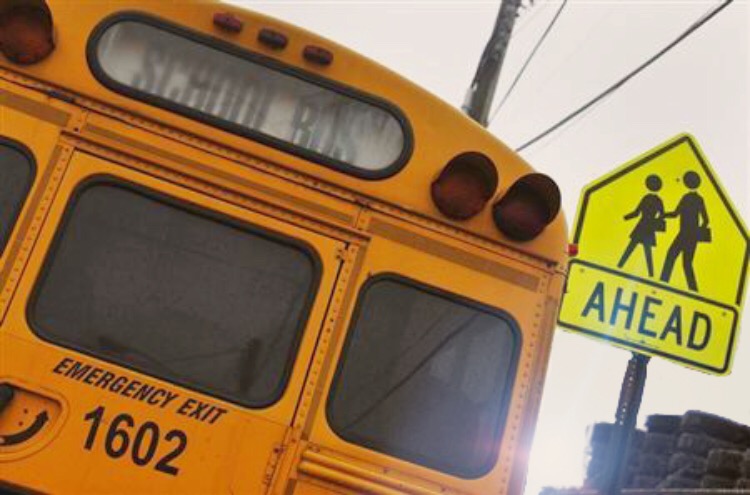MOVING ON UP
E. Delaney
November 6, 2018
SATs and ACTs, college applications, and dual enrollment. My parents and all their friends continue to remind me that I should be practicing for my driver’s license or deciding about dual enrollment. Just thinking about it, for many high school students, can be stressful. In elementary and even middle school, all of that was just some far-off blur; now, it’s practically all we can think about. The transition from elementary to middle and high school has been interesting to say the least.
In elementary school – at least mine – we had two classes that we switched between twice a day; one teacher taught social studies and math, and the other taught ELA and science. Electives or connections – whatever you called them – weren’t a thing. Funnily enough, it was harder to procrastinate in elementary than in middle school. The classes weren’t as fast-paced as they are now, but we still had to put our heads down and focus until the next switch. My teacher always complained of the time constraints. If only she knew.
The biggest worries for us students were essays, which we were given more than two weeks and all of our class time to do (I envy you, younger self), and the Milestones Test.
If you taught elementary, you either genuinely cared about kids’ futures (and consequently the future of your own world), or you didn’t care to get past a fifth-grade level of teaching education and needed a steady income. There were three types of teachers: Mrs. Frizzle, Prof. McGonagall, and the Charlie Brown teacher. Two of them got something done; unfortunately, those two were the minority.
All joking aside, the teachers I had helped shape me into who I am, the good and the bad ones; the bad ones I had to work to overcome, and the good ones propelled me along. Some of my most vivid memories took place in that school building, and I wouldn’t change the experiences despite how stressful they could be at times. The quality of the good memories outweigh the quantity of lousy ones.
Middle school was a pretty flat, rough couple years. I was homeschooled in sixth grade, putting me at a disadvantage when I was tossed back into the system too late to make new friends before the new social groups formed. Thankfully, I had my old group around, but just thinking back on it makes me grimace. There were highlights of course – chorus, drama, hanging out – but whereas before I’d been a highly motivated, straight-A student, I let my grades slip a little.
Of course, I still got that rush when I got a ninety-something and maybe a half-smile at a high eighty, but I’d just lost a lot of my drive trying to catch up in all the other areas. Besides, I was never really challenged that much, and even if I was, my steadfast resolve to overcome them was slipping. It was actually easier to procrastinate in middle school than in elementary, despite the fact that we had six classes every day of the week, the same classes all year.
In middle school, the biggest things to worry about were if you studied for the unit tests (probably not), if you had to take finals, and the big, scary end-of-year EOC test.
If you were wondering about the teacher types in middle school, it’s pretty much the same with some variations, but lucky me, I got more than my share of the Charlie Brown type. My eighth grade year improved some; I got two gifted classes, and those helped to greatly to refresh my will to not only get by but to exceed. I found I tend to work well with Mrs. Frizzle and McGonagall teachers; I liked the unpredictable, high-expectations element enough to work through the boring stuff and hope for something interesting the next day.
After a rollercoaster of a summer, I was all ready for high school and ready to take on the world. When I got there, I maintained that attitude fairly well, I must say, save for a few off days (or weeks). I still feel that way under all of the sleep deprivation and constant struggle not to curl up into a ball and withdraw from a healthy amount of human contact.
High school has only four blocks a day, which gives us more time to work and less pressure to speed through it. That doesn’t mean it isn’t stressful, since the difficulty of the material and amount of responsibility rises with grade level.
High school, we’ve all been told since we were little kids, was the end-all-be-all: the indicator of our potential greatness and the ultimate determining factor of whether we would have a successful and fulfilling career or our life would crash and burn.
Well, they lied. It’s not the end of the world if you don’t get a 4.0 GPA, don’t receive half of your college credits, or aren’t involved in every extracurricular activity available within the last four years of your legal childhood.
Transitioning from school to school is something most kids have to go through, and although it’s tough, it trains us for the demanding work world. Stress is okay; so is adversity, and if I’m going to get somewhere in the world I’ve got to accept that.
I’m going to have to get that driver’s license, study for ACTs and SATs, make a final decision about dual enrollment; I’m going to have to learn materials in spite of the Charlie Brown teachers and overcome the urge to procrastinate. By no means do I meet all these expectations, and I don’t expect it to be easy to. The real world is coming at us very fast, however, and we all could benefit from putting our heads down and getting to work while we still don’t have to pay taxes and live off of ramen noodles.

